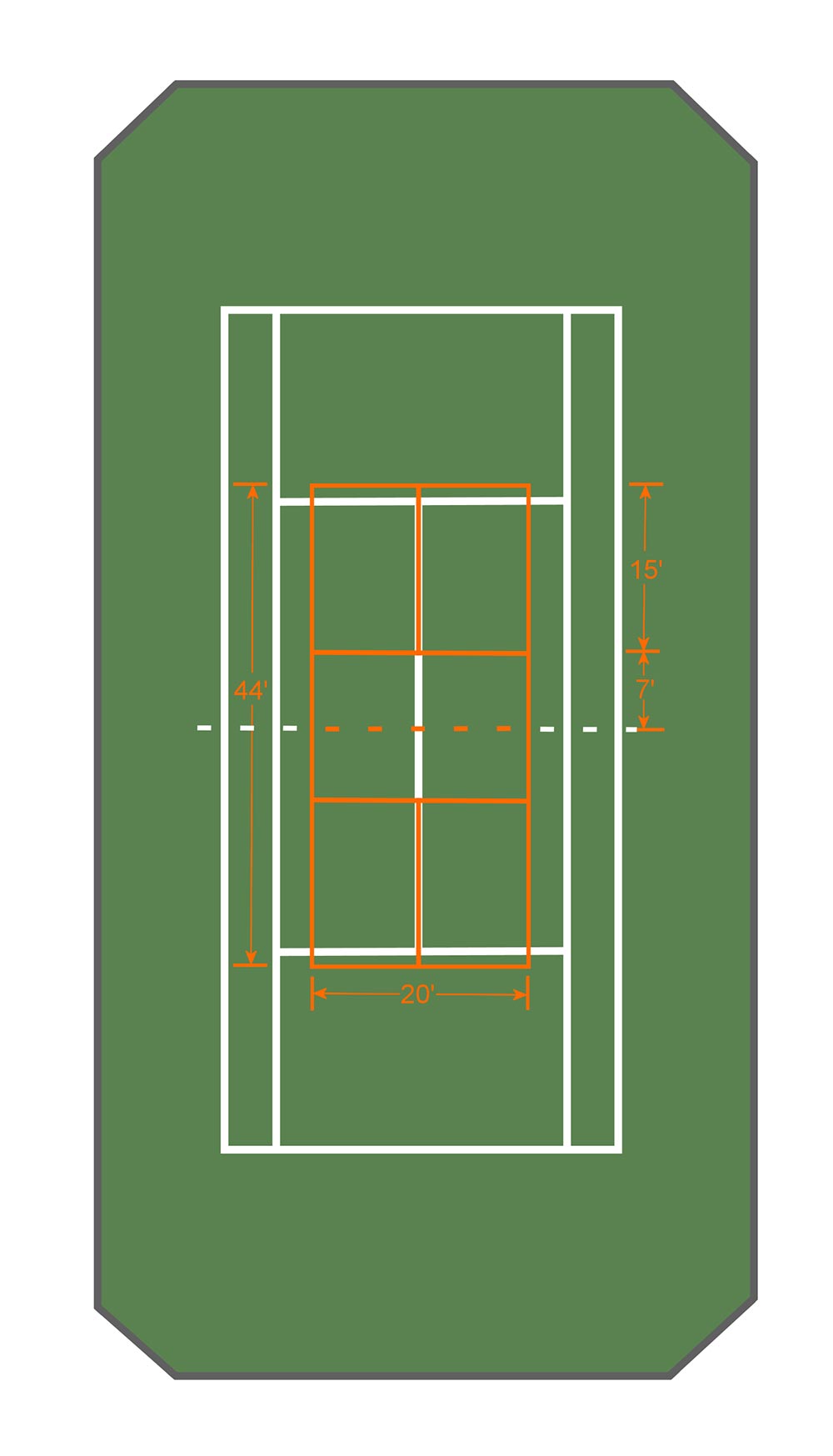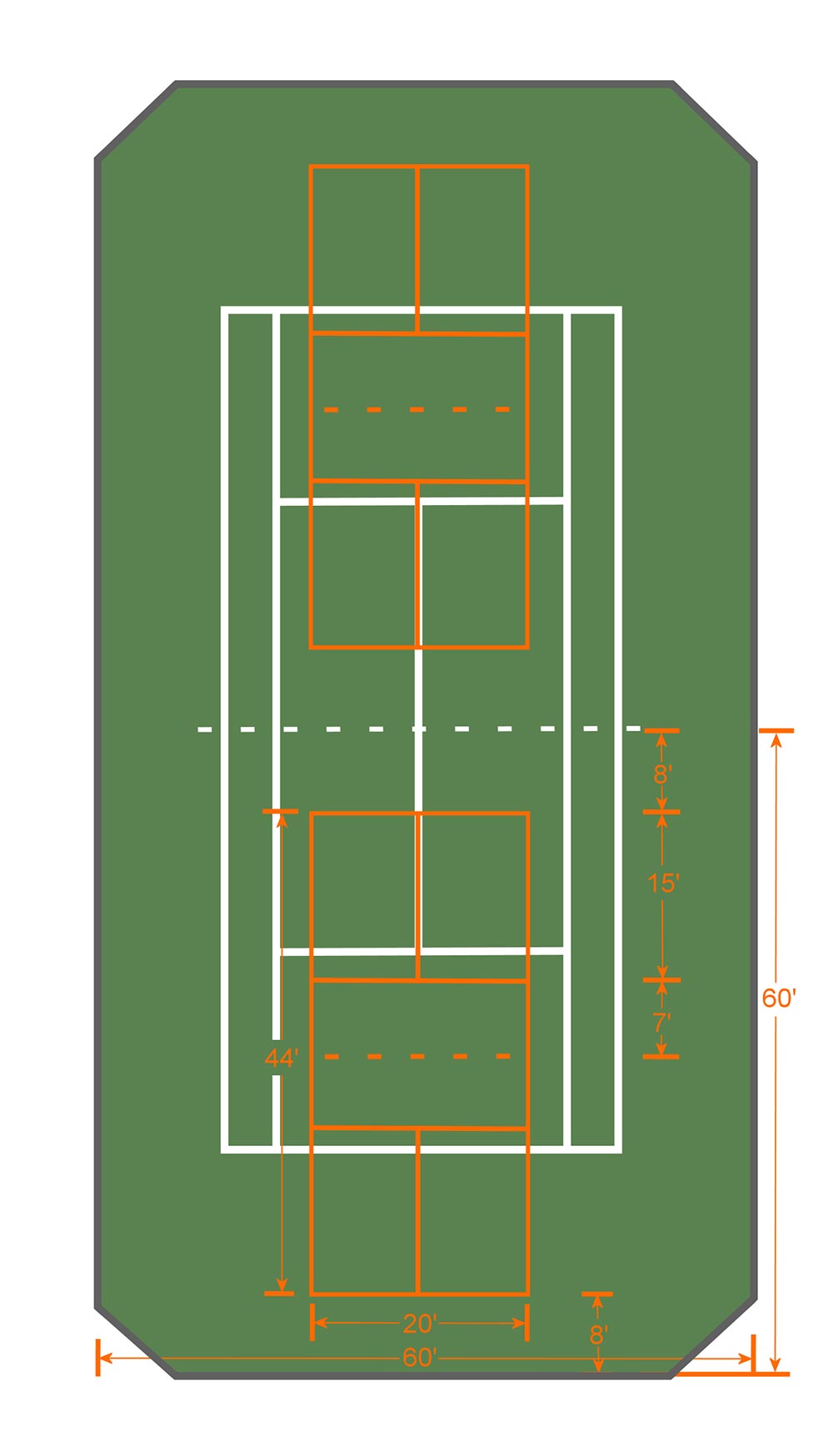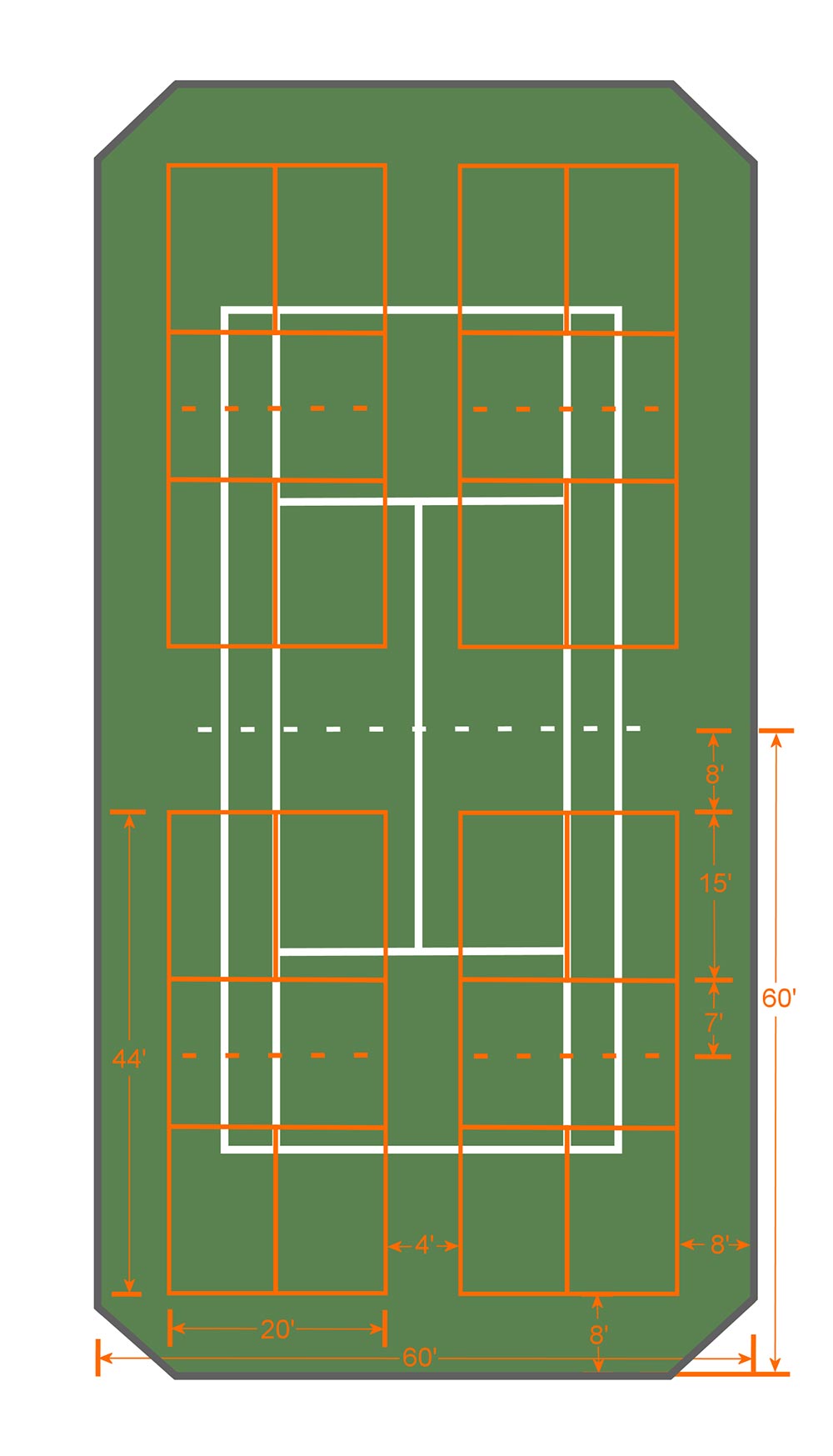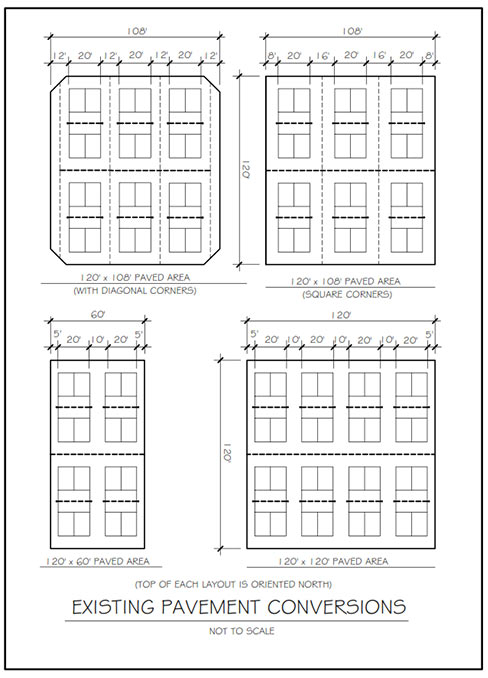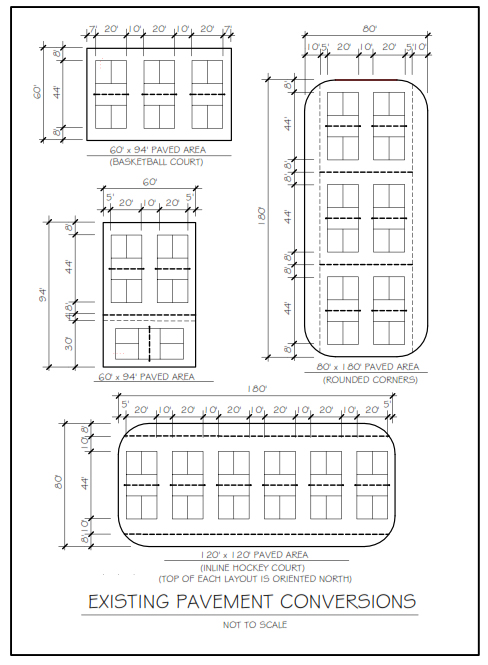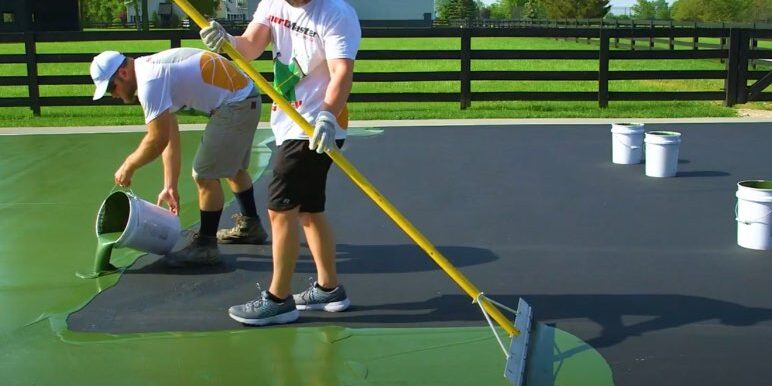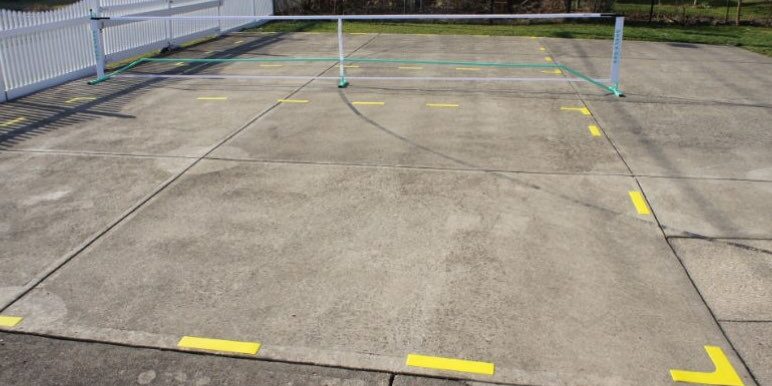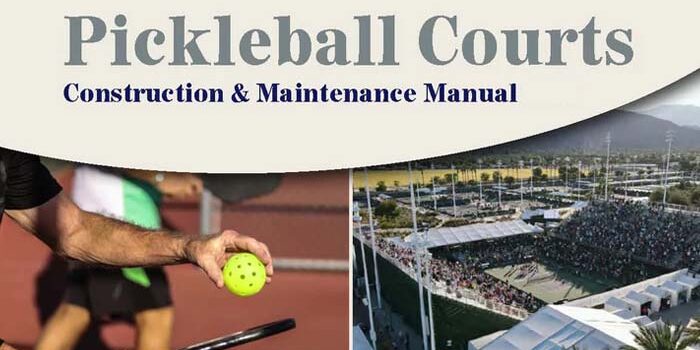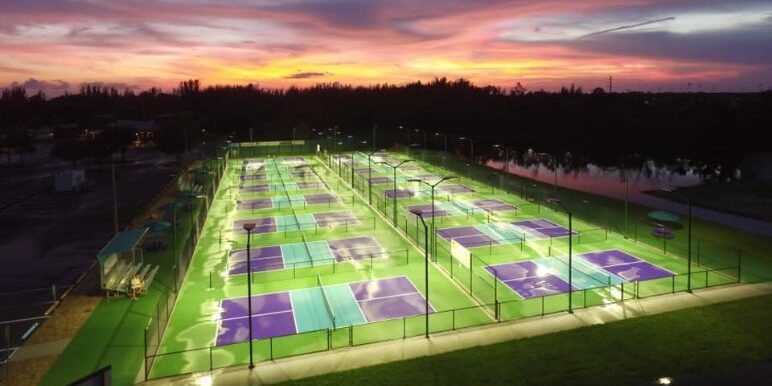While temporary pickleball courts can be set up on several existing sport surfaces such as basketball courts, volleyball courts, badminton courts and inline hockey rinks, the most common surface used for shared use is a tennis court.
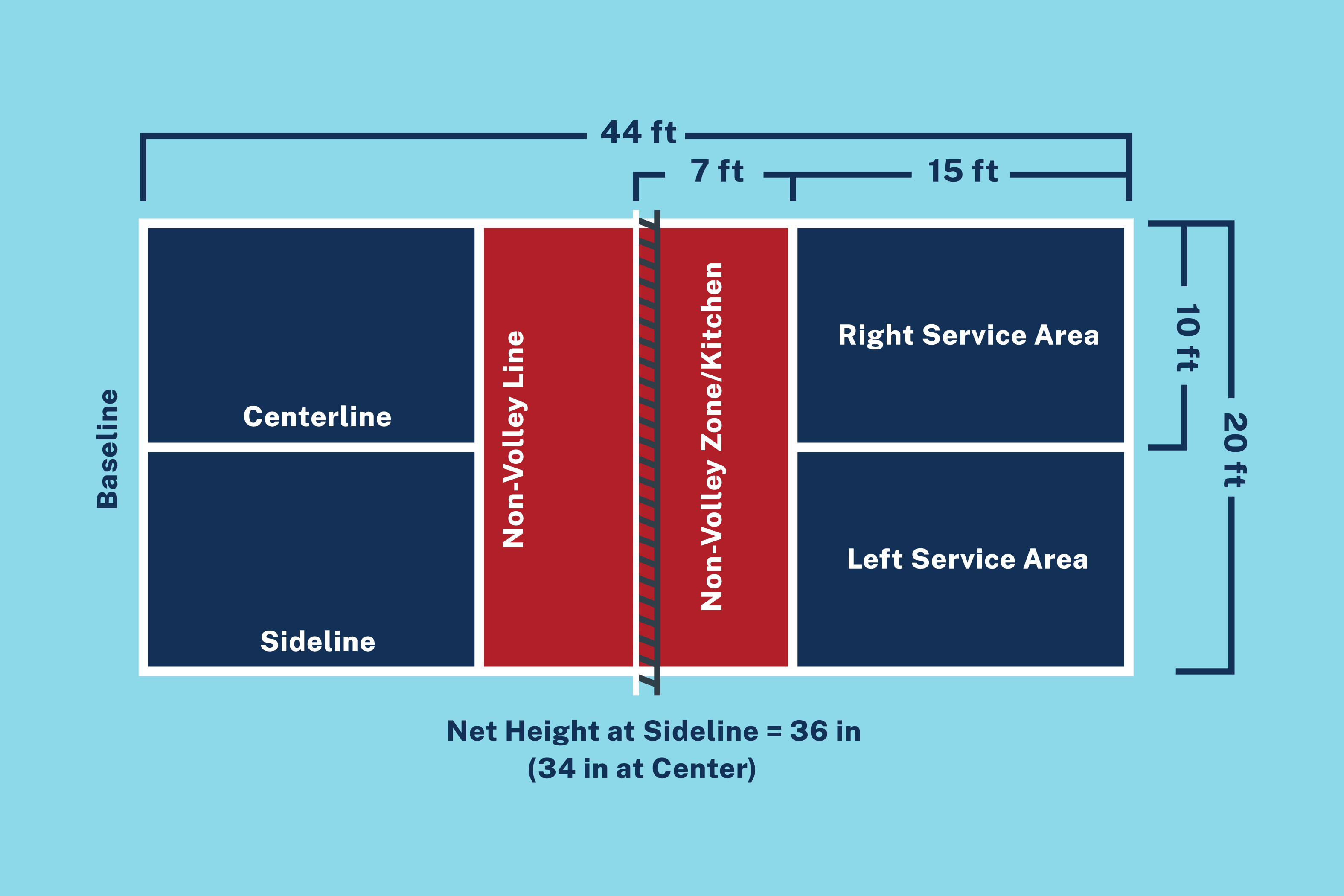
Pickleball Court Dimensions
When laying out a temporary (or permanent) pickleball court, it is important to know the correct specifications as indicated in the diagram. It is also important to note that if you are setting up an outdoor pickleball court on an existing court surface that is oriented in the normal north/south direction, do not place the pickleball courts at right angles to the court. If you do, one player will be looking directly into the sun in the early morning or late afternoon which can certainly prove to be safety hazard.
One Pickleball Court per Tennis Court
The simplest way is to just lower the tennis net to 34" in the center. Lines may be taped or painted on the court for pickleball (always check with facility first). Then the court can be used for both tennis and pickleball very easily. The pickleball lines are blue in the diagram on the right. Because of the size of the court surface, you might want to have some sort of temporary barrier for the balls so that they don't have to be chased the full length of the court.
The center strap could be used to bring the net down to 34 inches in the center. If the tension on the net cord is very tight, the tension might have to be loosened slightly by adjusting the ratchet on the net post.
Two Pickleball Courts per Tennis Court
|
Four Pickleball Courts per Tennis Court
The diagram on the right shows four pickleball courts on a tennis court. Note how the position of the pickleball courts has been shifted by two feet to allow for the angled corners of the tennis court. That leaves only 6 feet between the pickleball baseline and the tennis net. That is a little tight, but works in a pinch. The compromise is especially acceptable if the tennis court is being used temporarily while permanent pickleball courts are being built. If the tennis court does not have angled corners, then move the courts 2 feet so that there is an 8-foot distance between the pickleball baseline and the backstops. Note how the lines are made to coincide as much as possible with the tennis court lines in order to minimize line confusion for the players. Note also that this layout does not allow room for fences between the side-by-side courts. To serve as a backstop for the balls, the tennis net should be extended with netting or some sort of temporary barrier.
Need a Net?
Using this official USA Pickleball portable net, you can now easily play pickleball anytime, anywhere!

